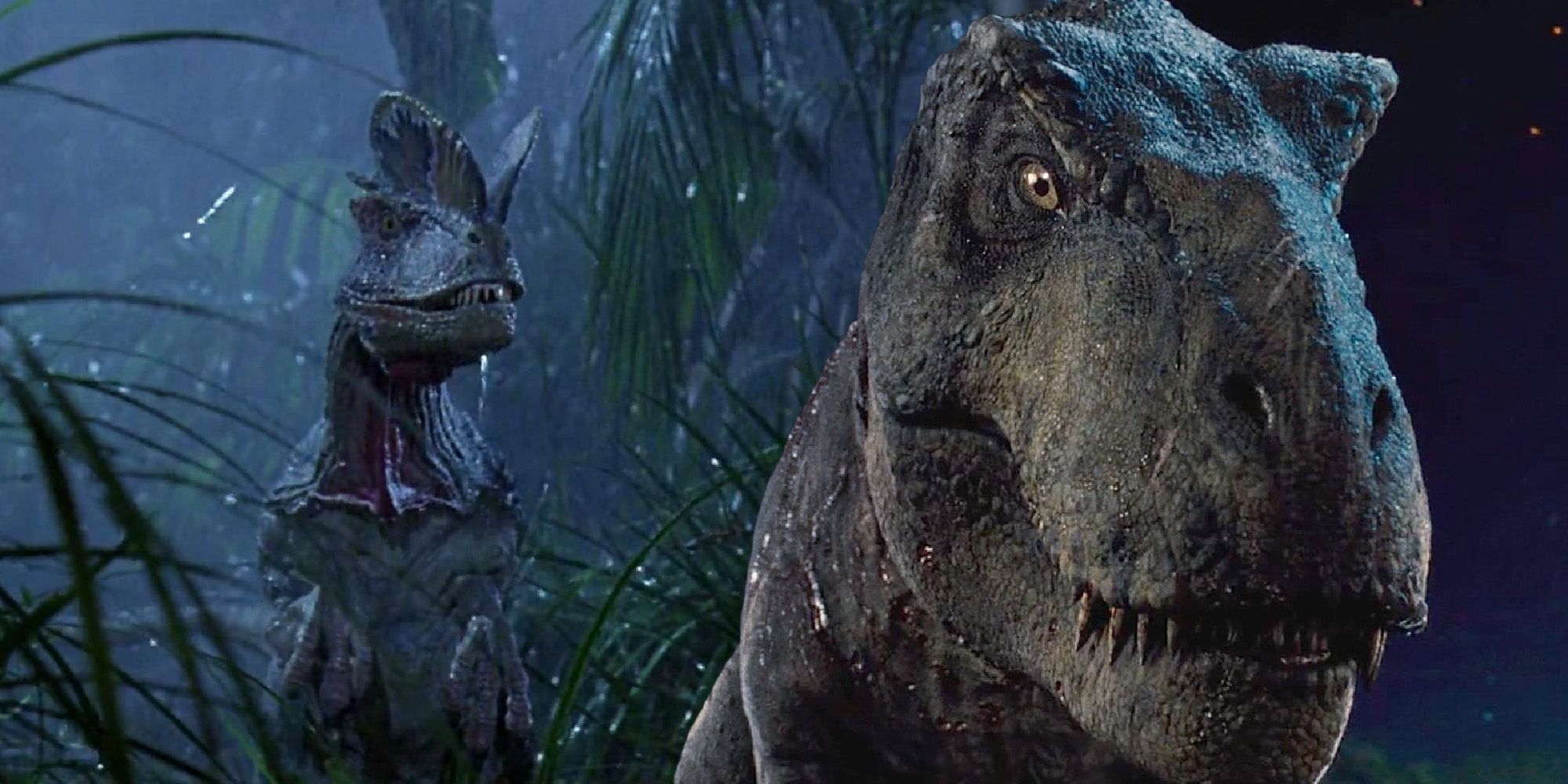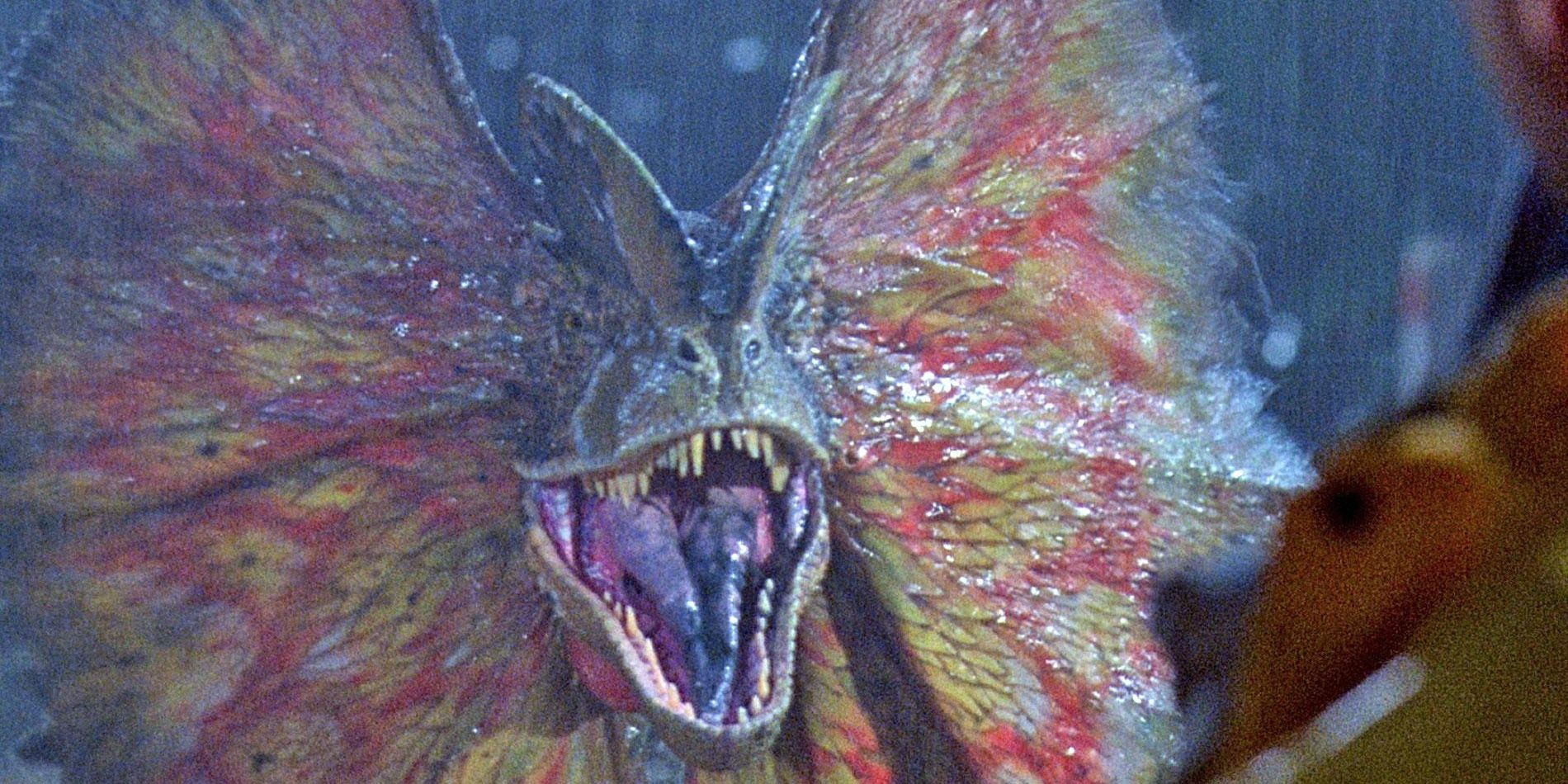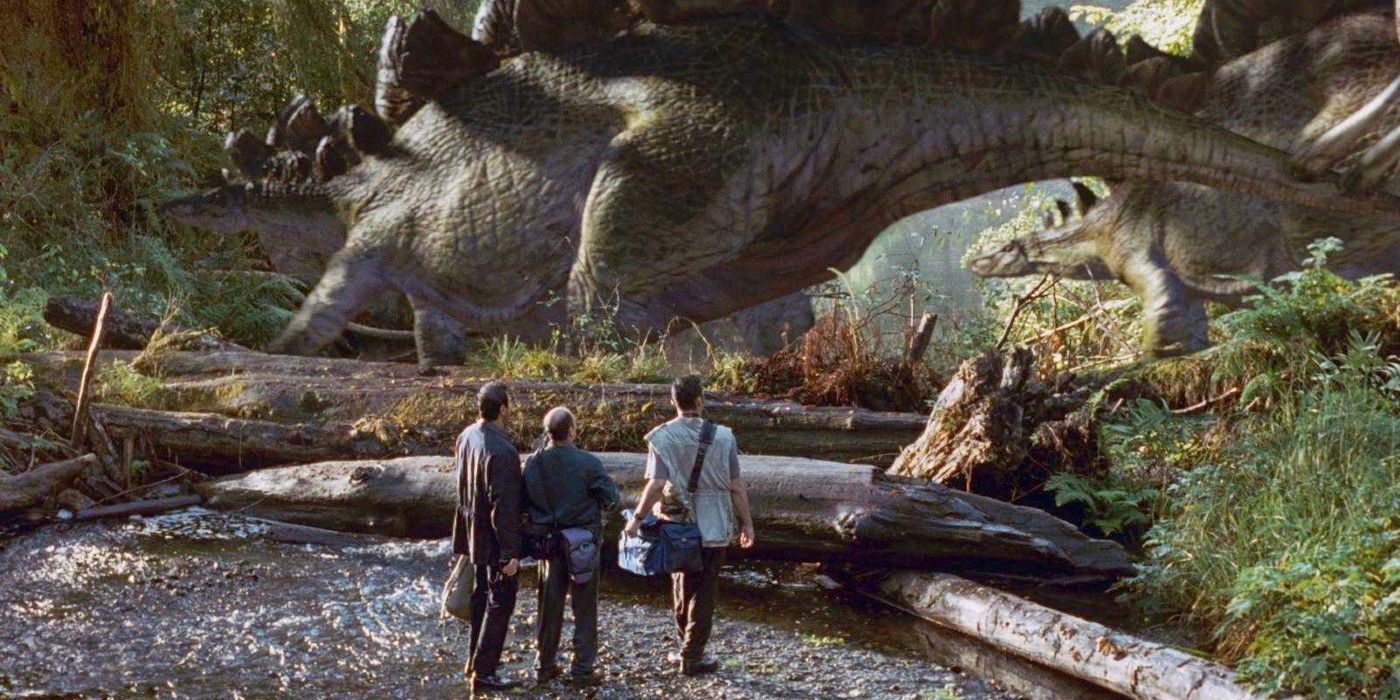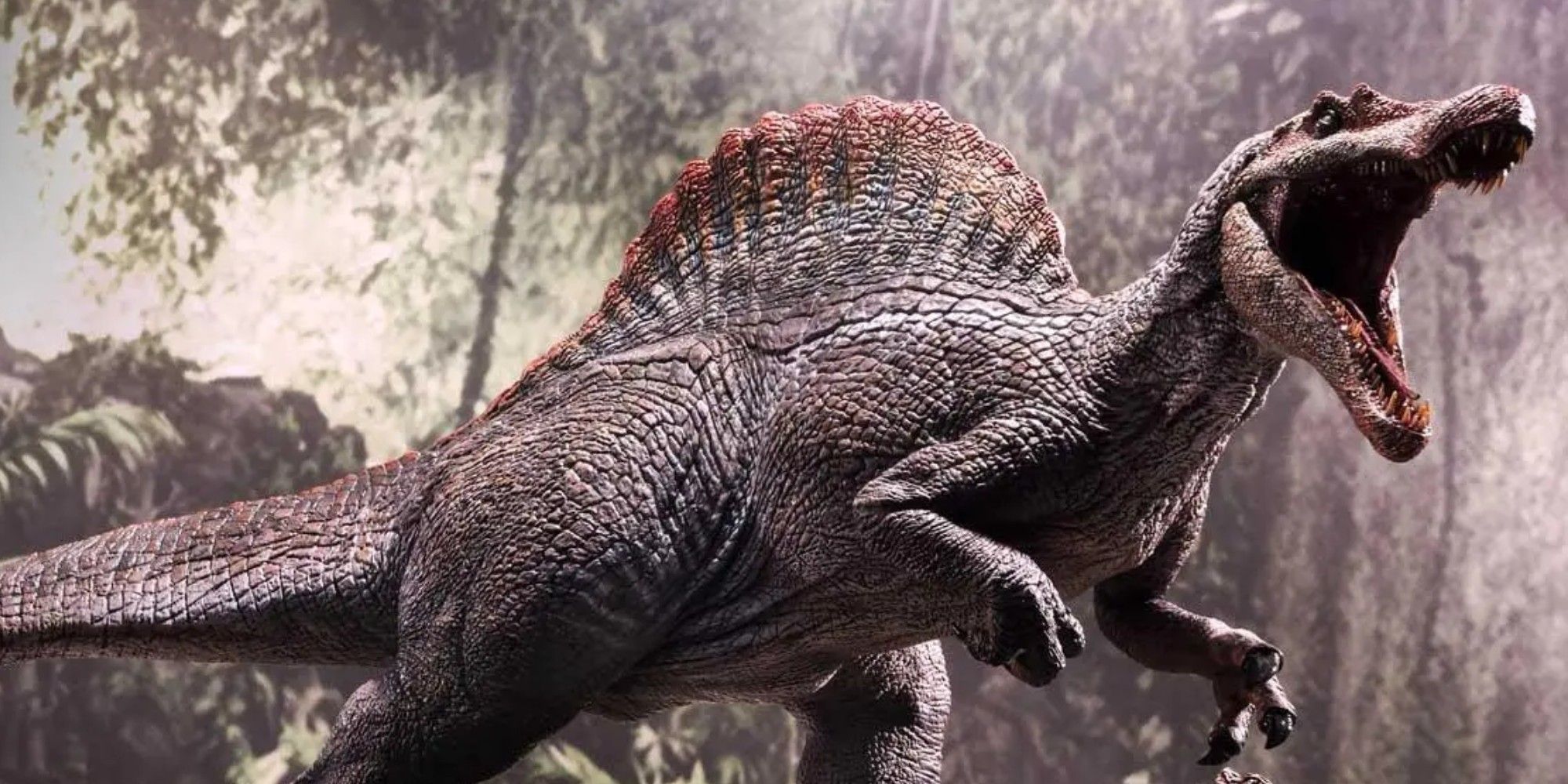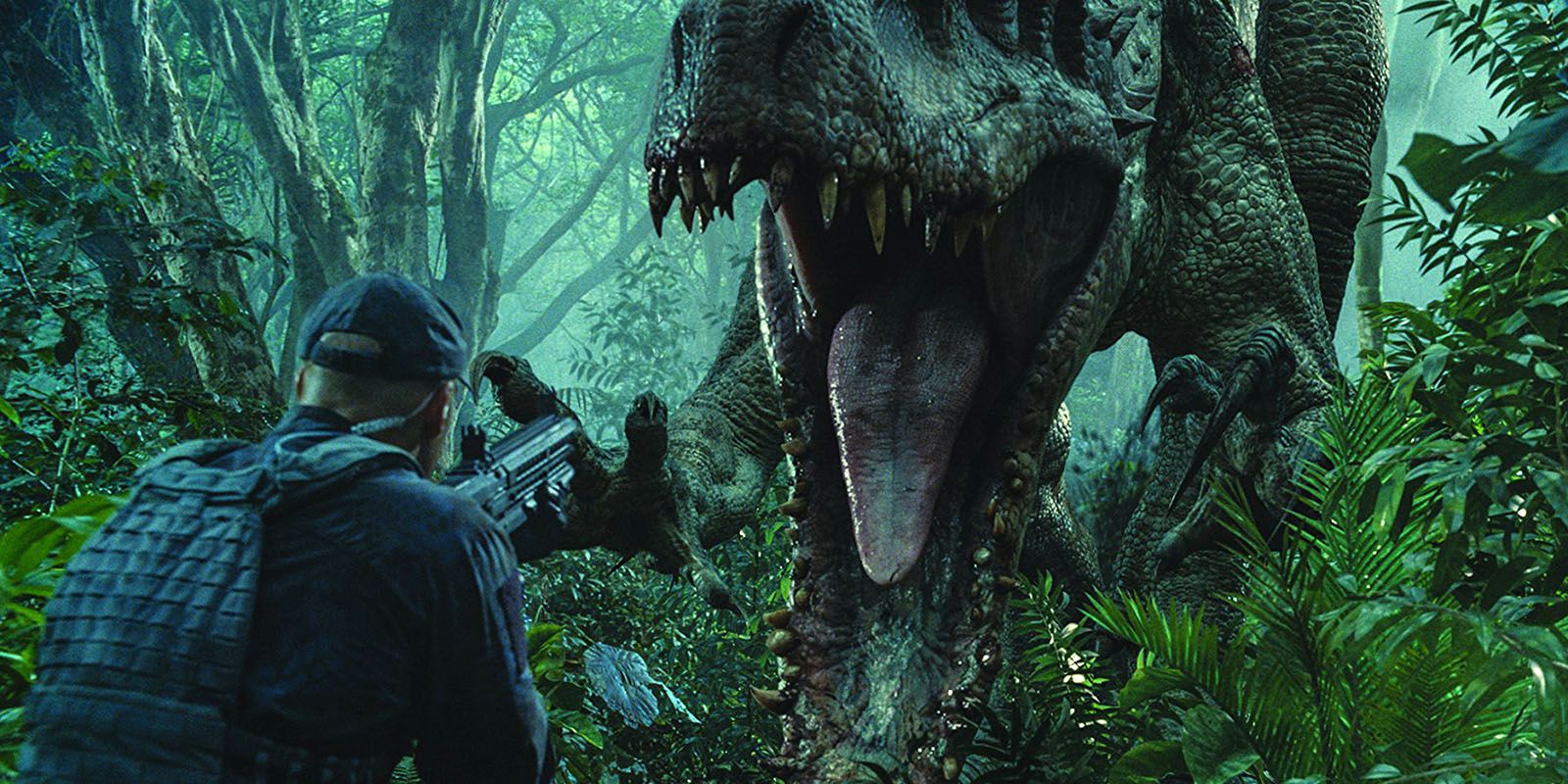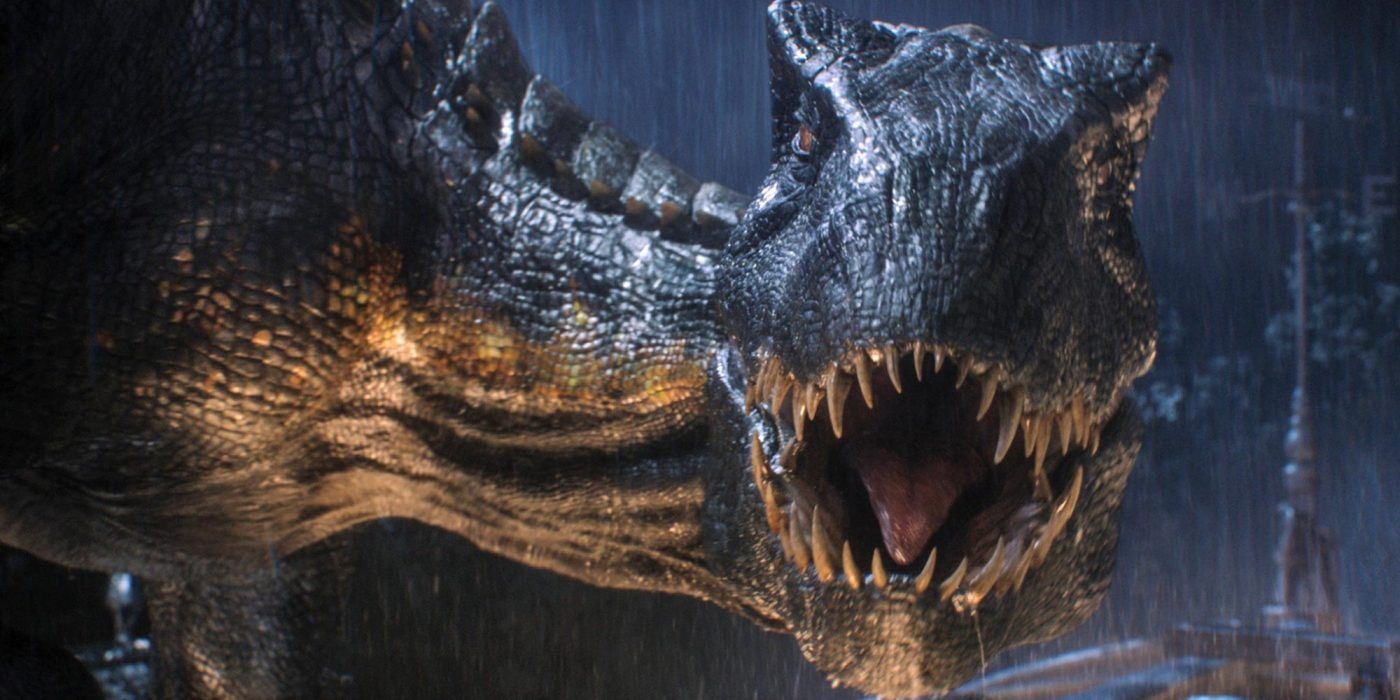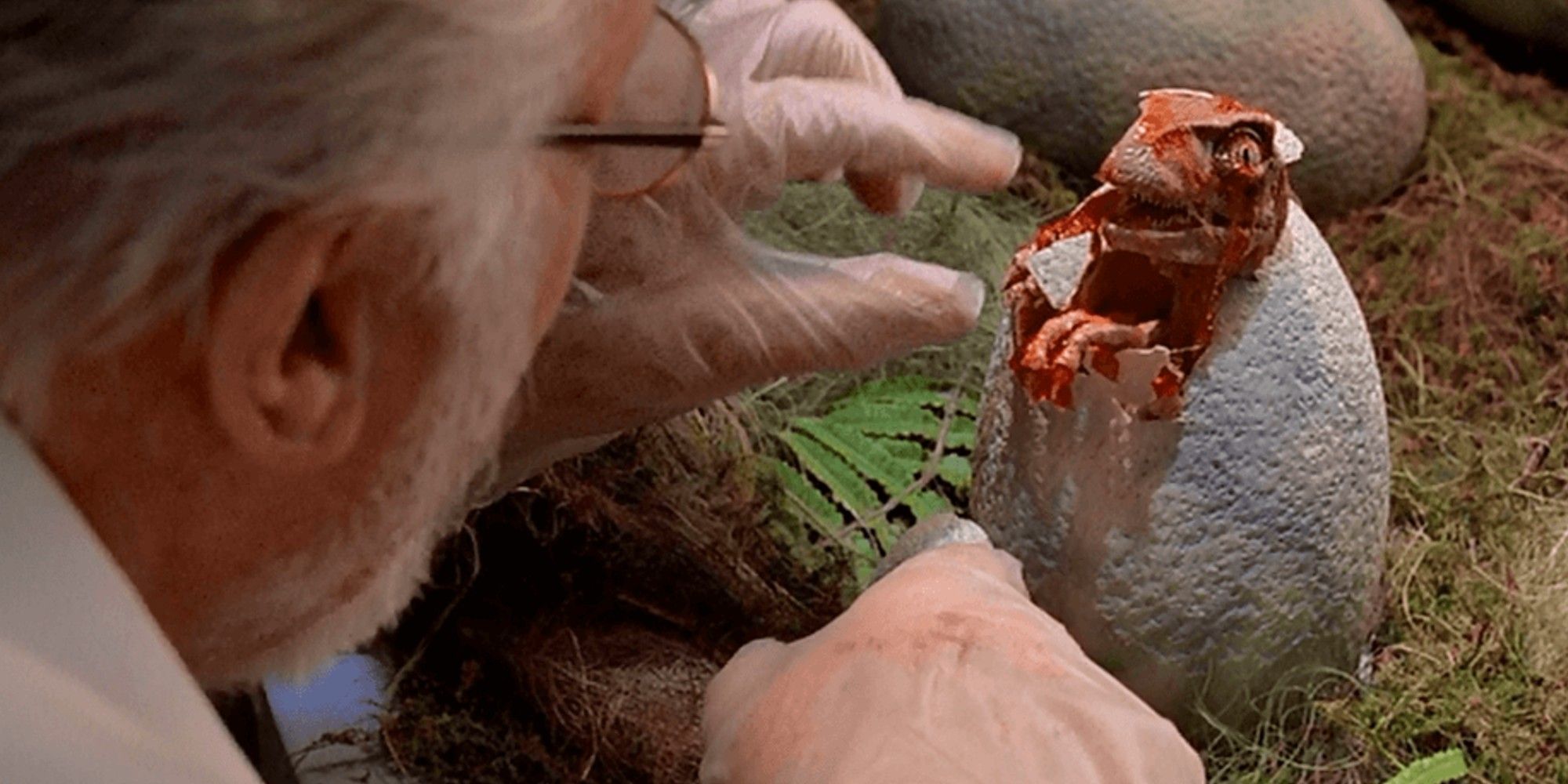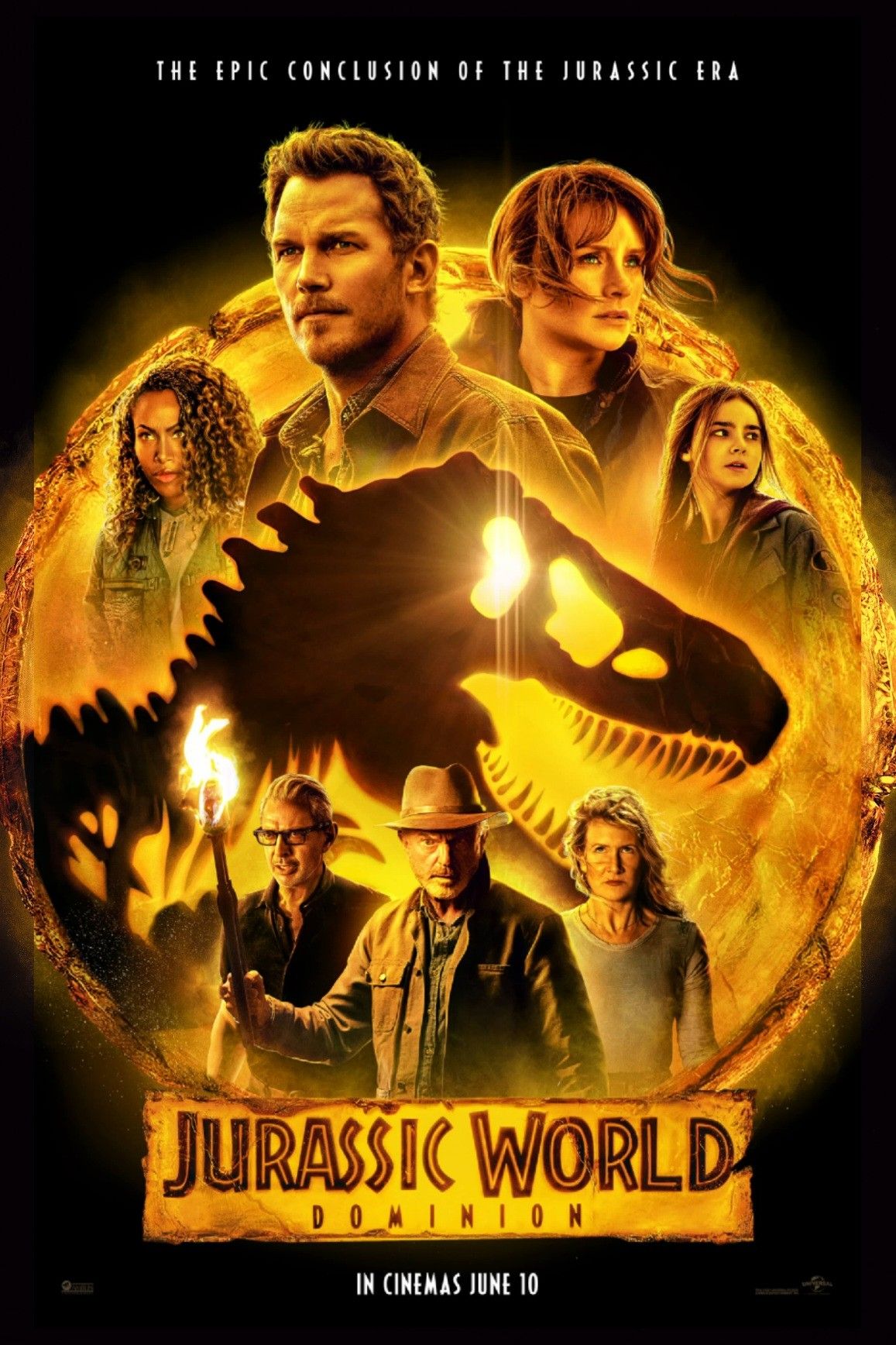Here's which dinosaurs are real and which are made up in the Jurassic Park and Jurassic World films. Despite the extensive scientific research behind most every Jurassic Park film, and the cooperation of famous paleontologists like James Horner and Robert Bakker, the filmmakers in each Jurassic Park and Jurassic World film definitely took some creative liberties in portraying the dinosaurs on screen, with later films making up new species outright.
Initially, watching a Jurassic Park film began as a cinematic experience that parallels park creator John Hammond's own objectives - to bring dinosaurs back to life, as it were. The marvel factor was always about that simple exchange with the audience. Then as the audience got hungrier for innovation (as Jurassic World states outright), the franchise looked to diversify and make bigger statements with its dinosaurs to appease its audience.
Given that the dinosaurs are the main draw of the film, it makes sense that filmmakers want to make them as cinematically dynamic as possible. For some directors, that necessitated giving some dinosaurs attributes of different species of dinosaurs, if not creating attributes out of whole cloth for the dinosaurs in question. But not until the Jurassic World films did these movies start making up new dinosaur hybrids. In and out of universe, as audiences became more familiar, and perhaps more jaded, with the idea of resurrected dinosaurs, the drive to entertain drove the filmmakers and park owners to create and use fake dinosaur hybrids. These blurred lines make it more important to pick out what is real and what is fake when it comes to the Jurassic Park dinosaurs.
Jurassic Park (1993)
Despite having arguably the biggest impact of all films in the series, the original Jurassic Park features far fewer dinosaurs and the fewest creative liberties regarding the dinosaurs that do appear. But that’s not to say Spielberg and crew didn’t play fast and loose with some of their chosen prehistoric creatures, though overall they followed the best and latest dinosaur science.
For dinosaurs that make relatively small appearances, like Gallimimus and the Triceratops, nothing about their appearance or behavior contradicts the dinosaur research of the early '90s, and even today what is shown of them in the film is consistent with current paleontological discoveries. It’s the more prominently featured dinosaurs that have the most fictionalized abilities, but even then the filmmakers were relatively tame in their liberties. The Tyrannosaurus Rex was a mostly accurate portrayal, though there is currently no evidence its vision was poor and based on movement, and its portrayal as a hunter definitely takes a side in the still-raging debate as to whether it was a predator, a scavenger, or some combination of the two. While it probably didn’t reach the ridiculous speeds of the T. Rex in the film, the bulky T. Rex could still reach decent speeds of about 25 miles per hour for its size, making the portrayal of the T. Rex more an exaggeration than a fabrication.
Other dinosaurs suffer more in the accuracy department. A real Brachiosaurus could not stand on its hind legs as portrayed in the film, and neither was it capable of the complex whale-like vocalizations it employs in the film. Likewise, real Velociraptors were probably feathered, and markedly smaller than their film counterparts, their appearance based more on the closely related and larger Deinonychus dinosaurs. And, while intelligent compared to their prehistoric peers, there is no evidence real raptors possessed a tenth of the intelligence their cinematic counterparts enjoy.
Finally, most paleontologists would agree that the most egregious creative liberties come with the portrayal of Dilophosaurus, who, in one of the film’s most terrifying moments, spits poison at and devours the unscrupulous Dennis Nedry as he attempts to smuggle dinosaur embryos out of the park. In addition to appearing somewhat smaller than an actual Dilophosaurus, the film version of the creature has a massive lizard-like frill and, as mentioned, spits venom, neither of which have any scientific basis whatsoever. But part of the fun of Jurassic Park is speculating on qualities dinosaurs might have had that would not be preserved in the fossil record, so some paleontologists (and most of the audience) are willing to give this film’s liberties a pass.
Jurassic Park: The Lost World (1997)
Jurassic Park: Lost World introduces more new dinosaurs while preserving what becomes the Big Three dinosaurs included in every later Jurassic Park and Jurassic World installment: T. Rex, Triceratops, and Velociprators. Among the new dinosaurs are Compsothagnus, a sort of tiny version of Gallimimus, Mamenichsaurus, another sauropod dinosaur, Pachycephalosaurus, Parasaurolophus, and Stegosaurus. In contrast to the previous installment, these dinosaurs don’t exhibit any abilities or traits unsupported by the paleontological record.
That said, the T. Rex again takes a prominent role in the film, with a T. Rex family seen for the first time, and the male T. Rex going on a rampage in San Diego during the climax of the film. Indeed, the only new dinosaurs that really have a significant impact on the plot is little Compsothagnus, with the new dinosaurs, even included-by-popular-demand Stegosaurus really only functioning as cameos. Within this film, the T. Rex is no more or less accurate than it was in the prior film, and all the other dinosaurs exhibit no traits that egregiously contradict the dinosaur science of the time
Jurassic Park III (2001)
The third, and for a time, final installment of the Jurassic Park franchise features a whole slew of new dinosaurs, as well as most from the previous installments (especially the Big Three: T. Rex, Triceratops, and Velociraptors). This film saw the first appearance of an Ankylosaurus in the franchise, as well as Ceratosaurus, Corythosaurus, and most significantly, a more prominent appearance of the Pterosaur, Pteranadon (which was not overtly inaccurate, but inaccurate in the sense that it is a pterosaur and not a dinosaur per se), and a new carnivorous dinosaur, Spinosaurus.
The Spinosaurus was introduced as a successor to the infamous T. Rex, killing its rival in an early battle and establishing itself as the main dinosaur antagonist. Despite this battle being the focal point of most fans ire, Spinosaurus would not have been able to kill the T. Rex, if for no other reason than Spinosaurus and T. Rex were separated by several million years, Spinosaurus living in the Jurassic period and T. Rex in the Cretaceous period. But supposing the two did end up fighting each other, Spinosaurus’ long snout indicates it most likely subsisted on a diet of fish, making it a poor opponent of the decidedly better-equipped T. Rex.
Jurassic World (2015)
Jurassic World was the first film in this series to create completely new dinosaurs, specifically with the new carnivorous antagonistic force, the Indominus Rex. Indominus Rex is a hybrid of a T. Rex and Velociraptor, with DNA from cuttlefish, tree frogs, and a smattering of other carnivorous dinosaurs. It can camouflage itself, has longer arms than the T. Rex, and unlike the T. Rex or the Velociraptor, it can run on all fours. Indominus Rex is created by Dr. Henry Wu in response to the concerns of the Masrani corporation that park-goers are getting bored with resurrecting actual dinosaurs that actually existed, and creating a new hybrid dinosaur would excite more interest.
But, like any Jurassic Park installment, the film introduces a new crop of real dinosaurs in addition to the recurring dinosaurs (including, of course, the Big Three: Triceratops, T. Rex, and, playing a much more major role this time, Velociraptors). Among the new creatures that actually existed are the carnivore Baryonyx, and pterosaur Dimorphodon, and the franchise’s first mosasaur, Mosasaurus. That said, the mosasaur's size is inconsistent throughout the film (ranging from easily able to swallow a shark, to just barely able to bite human-sized creatures), and the pterosaurs are portrayed as much stronger and more agile flyers than they actually were. The film also originally included a prominent role for another hybrid, the Stegoceratops, but its appearance was reduced to a computer screen in the final film.
Jurassic World: Fallen Kingdom (2018)
In addition to Indominus Rex, InGen geneticist Dr. Wu clearly did not learn his lesson and proceeded to create a hybrid of Indominus and Velociraptor called Indoraptor. Dr. Wu did have a different purpose in creating this hybrid, intending Indoraptor to be a weapon rather than a tourist attraction, but the experiment predictably went badly wrong over the course of the film. Looking much more like a raptor than Indominus Rex, Indoraptor can also alternate between walking on four and two limbs, with long, human-like arms, and black skin, rendering it almost invisible in the dark.
To its credit, Jurassic World 2 doesn’t overly indulge in mutant dinosaur making - and thankfully Jurassic World 3 also won't include more dinosaur hybrids - and included most dinosaurs from the previous films, as well as introducing a few not seen in the franchise before. Fallen Kingdom introduced carnivores Allosaurus and Carnotaurus, as well as herbivore Stygimoloch. The latter is actually more of a controversial inclusion than it first appears, as most paleontologists consider Stygimoloch a juvenile Pachycephalosaurus rather than its own distinct species.
But Why Make Up Dinosaurs At All?
The original series, to its credit, never made up a new dinosaur, instead exploiting the general public's unfamiliarity with most dinosaurs to dazzle their audience with a new dinosaur or prehistoric creature in each installment. There are so many dinosaurs most regular filmgoers have no idea exist, that almost seem made up with their diverse and baffling physiology, it seems strange that the filmmakers of the new crop of Jurassic Park films seem to think they need to make up dinosaurs to make their films more interesting and attractive. The original sometimes played fast and loose with true dinosaur physiology, but never saw the need to make up a species outright. Why do these younger films indulge so freely in that fantasy, with so many fantastic and bizarre real dinosaurs at their fingertips?
The filmmakers' stated intention was to show how scientific hubris has gone beyond resurrecting the dinosaurs that actually existed and make their theme park more successful and exciting by creating animals that the world has truly never seen before. That said, in doing so they might unconsciously betray a similar lack of trust in their audience that the characters who create the fake dinosaur hybrids exhibit: audiences have been so familiarized with once exotic species of dinosaurs, that the filmmakers don’t trust that simply introducing a hitherto obscure species of dinosaur will capture audiences' attention the way they did back in 1993. They need to up the ante of the original film trilogy’s whole “playing God” themes by having scientists create sexier, but incredibly dangerous hybrid creatures for shallow reasons.
But that often leads to nonsensical character decisions which make the creators of said dinosaurs look like morons. In-universe, they knew the consequences of failing to carefully contain real dangerous dinosaurs like the T. Rex and Velociraptors: why would they take the risk of creating an entirely new dinosaur more dangerous and with more specialized abilities than the existing dinosaurs? To chalk it up entirely to hubris and capitalism seems like a cop-out: Hammond and his crew ultimately committed a phenomenally stupid and dangerous act by resurrecting dinosaurs, but they had more in their defense, what with its potential benefits to the scientific community and the possibility of groundbreaking new discoveries about the earth’s past.
Creating a whole new dinosaur hybrid that’s also incredibly dangerous offers no such excuses or possible benefits. Instead, it's creating something new and dangerous simply because “it’s cool," and might make more money and garner more attention (which results in more money). Granted, plenty of people are primarily motivated to do stupid things for the sake of profit, but to have that be the scientists only motivation for creating such an incredibly dangerous hybrid dinosaur like Indominus Rex is shallow and lacking in any type of sense that this is an action an actual human would persuade themselves is reasonable. Not that it couldn’t happen in real life, but the decision really needed more nuance to be accepted as justifiable in and out of the world of the Jurassic Park/Jurassic World franchise.

